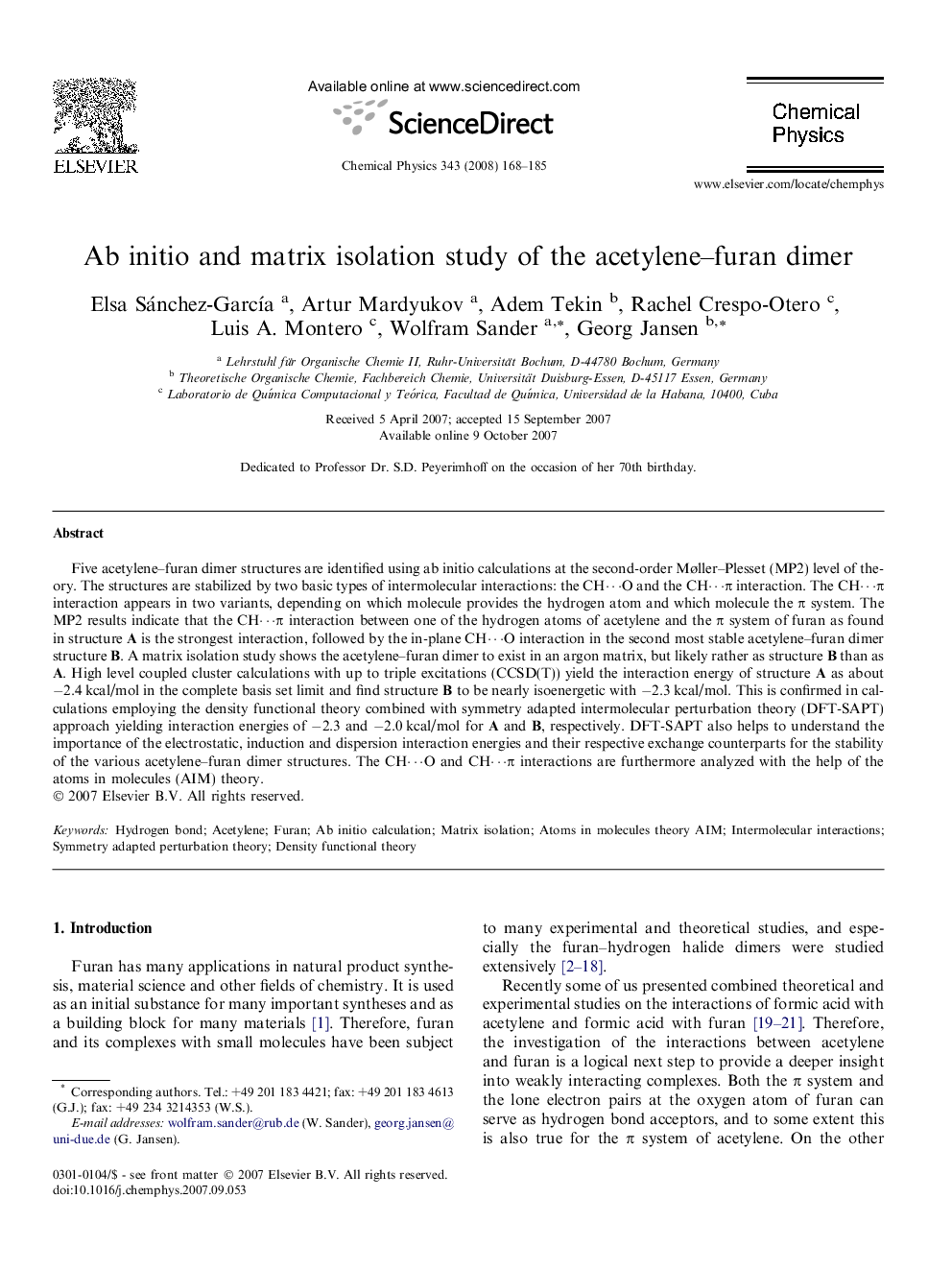| Article ID | Journal | Published Year | Pages | File Type |
|---|---|---|---|---|
| 5376237 | Chemical Physics | 2008 | 18 Pages |
Abstract
Five acetylene-furan dimer structures are identified using ab initio calculations at the second-order Møller-Plesset (MP2) level of theory. The structures are stabilized by two basic types of intermolecular interactions: the CHâ¯O and the CHâ¯Ï interaction. The CHâ¯Ï interaction appears in two variants, depending on which molecule provides the hydrogen atom and which molecule the Ï system. The MP2 results indicate that the CHâ¯Ï interaction between one of the hydrogen atoms of acetylene and the Ï system of furan as found in structure A is the strongest interaction, followed by the in-plane CHâ¯O interaction in the second most stable acetylene-furan dimer structure B. A matrix isolation study shows the acetylene-furan dimer to exist in an argon matrix, but likely rather as structure B than as A. High level coupled cluster calculations with up to triple excitations (CCSD(T)) yield the interaction energy of structure A as about â2.4 kcal/mol in the complete basis set limit and find structure B to be nearly isoenergetic with â2.3 kcal/mol. This is confirmed in calculations employing the density functional theory combined with symmetry adapted intermolecular perturbation theory (DFT-SAPT) approach yielding interaction energies of â2.3 and â2.0 kcal/mol for A and B, respectively. DFT-SAPT also helps to understand the importance of the electrostatic, induction and dispersion interaction energies and their respective exchange counterparts for the stability of the various acetylene-furan dimer structures. The CHâ¯O and CHâ¯Ï interactions are furthermore analyzed with the help of the atoms in molecules (AIM) theory.
Keywords
Related Topics
Physical Sciences and Engineering
Chemistry
Physical and Theoretical Chemistry
Authors
Elsa Sánchez-GarcÃa, Artur Mardyukov, Adem Tekin, Rachel Crespo-Otero, Luis A. Montero, Wolfram Sander, Georg Jansen,
